Parkers Cars of The Year 1972-2022
The Parkers team has put toogether a list of the best new cars from each year of its publication – exciting stuff considering we’re looking at so many cars. It’s reassuring to see that every year sired a great car in one way or another.
The Parkers Big 50
Don’t believe us? Keep scrolling or you can skip to an individual Parkers Car of The Year by clicking on the year you’re looking for.
Plus! Jump to 2022’s Car of The Year: Skoda Enyaq iV
All the Parkers Car of The Year winners in order
1972 Renault 5
Rewriting the supermini books

What matters most – style, or substance? Renault knocked the latter out of the park with the Renault 5, launching a clean, crisp hatchback that defined the shape of small cars pretty much for the next half century. Underneath, it used proven Renault 4 engines and gearboxes at first, but eventually evolved into a refined, comfortable small supermini – and a potent rally car, too.
Like many Renaults, it had unequal wheelbases left and right, and soft suspension that delivered a ride modern cars rarely emulate. It’s set to be recreated in electric form soon as Renault recognises one of its most important designs.
1973 Volkswagen Passat
A massive leap forward for Volkswagen
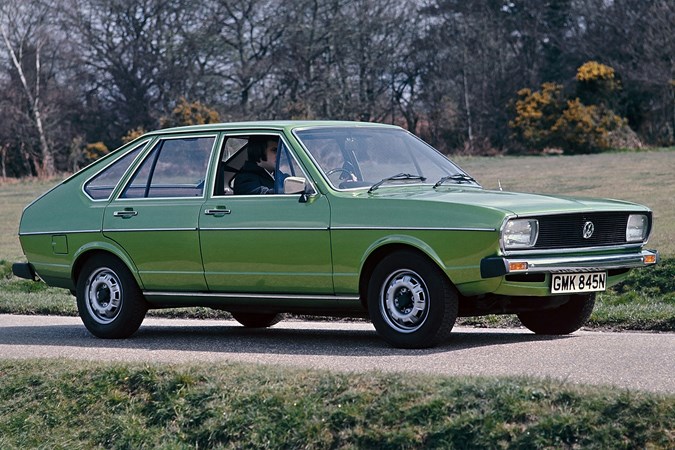
Volkswagen had been struggling to replace the Beetle for years – its problem was that it was so successful, and the company didn’t know how to build anything other than rear-engined aircooled cars. New ideas were needed – and they arrived in the shape of Audi, and lessons learned from now-obscure NSU.
Water-cooled engines, front-wheel drive and the solidity that helped the Beetle endure put VW on a path to greatness – and like Volkswagen Group today, the Passat’s key was shared technology. It was an Audi 80 underneath and all the better for it. It arrived in 1973 in the form of a stylish front-wheel drive fastback which evolved into a practical hatchback. And from this successful beginning, a decade-long success story was launched.
1974 Citroen CX
Sophistication meets beauty
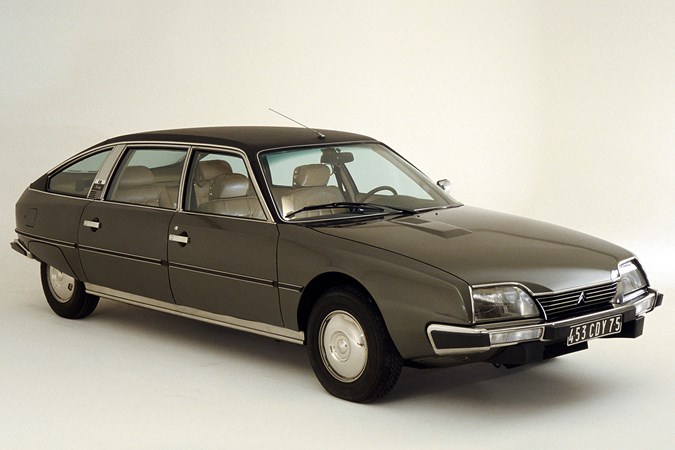
A car that drives like nothing else, controls that take some getting used to, and evangelistic, enthusiastic owners? No, not Tesla. The Citroen CX was like a visitor from another world when it landed in 1974 and, beneath its space-age shape lurked alien approaches to steering, suspension and brakes (at least for those drivers new to Citroen).
A powered self-centring steering system foreshadowed lane-keeping assistance, and potent turbodiesel models provided a glimpse into the 21st century – in the 1970s. It was on sale for 16 years before the equally futuristic, but less shocking, XM replaced it.
1975 Volkswagen Polo
Brilliant first-generation supermini
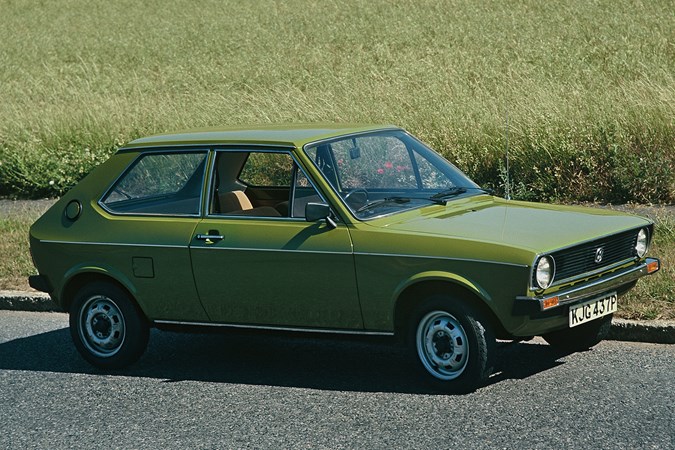
Originally launched as the Audi 50 in 1974, the Volkswagen Polo is arguably the world’s first premium supermini, decades before MINI entered the game. Suitably rebranded as the Volkswagen Polo after a year on sale, this tidy and excellent small car vaulted straight to the head of the class against the Renault 5 and Fiat 127, thanks to its combination of practicality, quality and all-round good driving manners.
This first-generation Polo was also nicely styled, as it emerged from the Italian styling house Bertone, which was famous for the decade’s most iconic supercar, the Lamborghini Countach.
1976 Mercedes-Benz W123
Classy, well-made timeless saloon
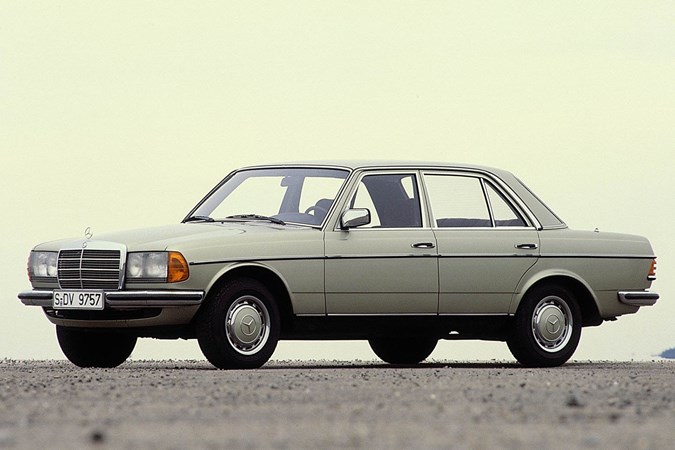
Before Mercedes was a luxury brand, it was a premium brand in the most literal sense. The company’s cars were merely rivals for saloons and estates offered by other marques – but their build quality and the way they were engineered were leagues ahead of the competition.
At the time in Britain, you paid a premium for any imported car. But Mercedes justified that premium – and the W123’s safety-focused, advanced design was one of the best. The 280TE with its fuel injected straight six was an impressive touring estate – and even the basic Mercedes 200’s air of solidity and serenity eclipsed the rattle and hum of Ford, Vauxhall and Peugeot rivals.
1977 Matra-Simca Rancho
Pioneering crossover looks good today
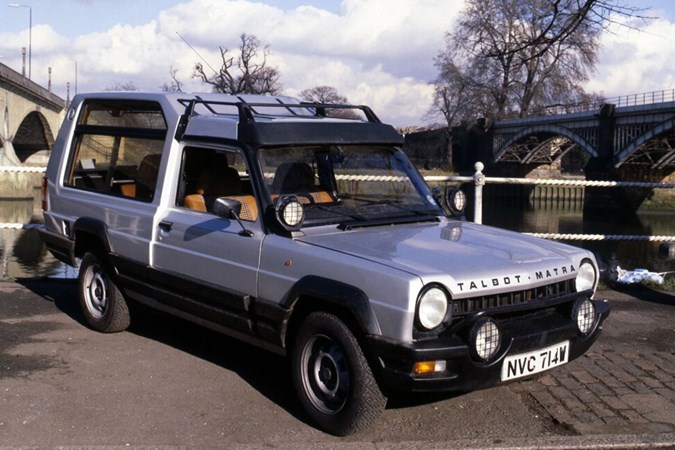
How desirable are rugged crossovers? One of the Parkers team once stole a Matra Rancho… that’s how much. Admittedly it was a palm-sized Corgi, and they fessed-up straight away, but the allure of that wide-arched, adventurous car in a world of boring saloons was undeniable even for a seven-year-old.
Now the Rancho’s legacy is everywhere: front-wheel drive, plastic-arched faux-by-fours with tall bodies and small engines. The truth is, the Rancho was not a good car – but it was a very good idea. The Simca van-based Rancho rusted, had a rattly, unreliable engine, and wasn’t much good off road. But just look at it and tell us you don’t want one.
1978 Saab 900
Rugged, tough, classless Swede
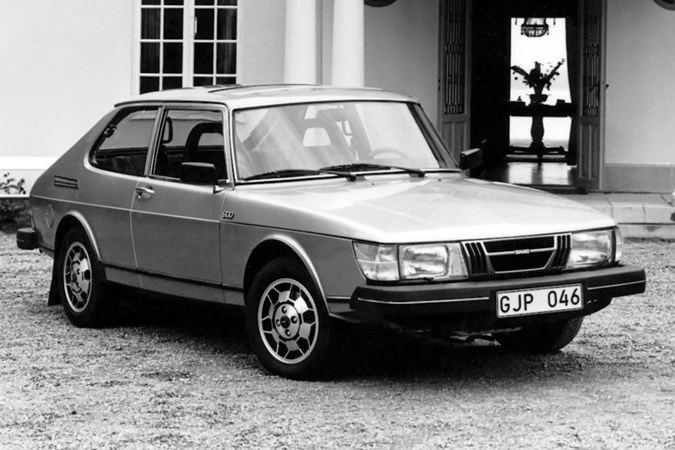
The Saab 900 is one of the cleverest model updates in automotive history. Under the skin, the 900 was a thorough update of the 99, which first went on sale in 1966. But what it emerged as was an idiosyncratic – and safe – executive car fit for the 1980s and perfect for today’s classic car fans thanks to its maker’s commitment to technology and engineering.
Like the 99, the 900 was a turbo pioneer, being launched with a punchy 145hp from its 2.0-litre four-cylinder engine – and that was enough for it to trade blows with its six- and eight-cylinder rivals. Excellent aerodynamics also meant quiet high-speed cruising, while well-thought-out suspension resulted in tidy and fun handling.
1979 Volkswagen Golf GTI
Cultural icon straight out of the box
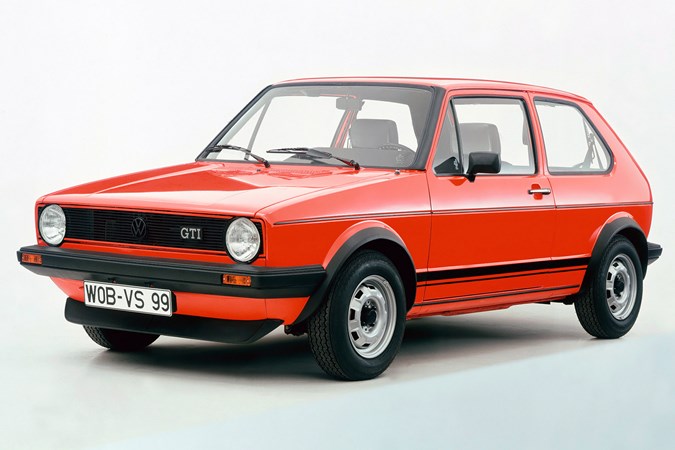
It wasn’t the first hot hatch – that title goes to a forgotten Simca – but it was the first to be truly usable, every day, by any driver. Volkswagen’s masterstroke was adding fuel injection to the tough four-cylinder engine, distant descendents of which still forms the backbone of VWs today, yielding ample power and torque to thrill, but also the reliability that had escaped the likes of the Sunbeam Lotus or Chevette HS.
Left-hand drive exclusivity gave way to RHD, bigger engines and convertible models before the Mk2 Golf refined and cemented the concept in the British psyche. It’s continued to see off challengers for eight generations – look to the current Golf R to understand how dramatic the GTI was at launch.
1980 Audi Quattro
Four-wheel drive rally champion

The Quattro ushered in a new decade in the best way possible for Audi. A new flagship coupe based on the 80, but powered by the company’s five-cylinder turbo engine tuned to deliver 200hp. And if that wasn’t enough, the powertrain sent its drive through a clever and compact permanent four-wheel drive transmission. In short, this combination of VAG parts created a giant-killing sports coupe and launched Audi into the prestige market big time.
As well as being a championship-winning rally car, the Quattro ended up being a long-lived flagship that lent its four-wheel drive technology to all other models in Audi the range. The Quattro name is synonymous with Audi today, recalling how this pioneering coupe would bring the benefits of four-wheel drive to a much wider audience.
1981 Fiat Panda
Cute city car that’s clever inside
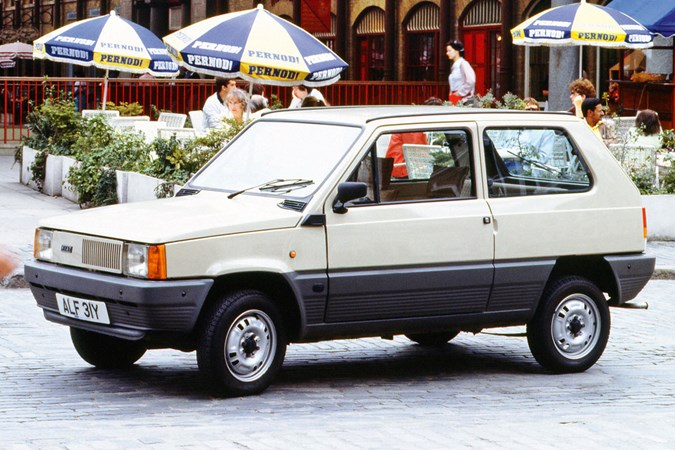
With decades of experience producing small, affordable cars for a Europe that was yet to become affluent, Fiat’s skill wasn’t in making a car cheap. Lots of firms could manage that. No – Fiat’s trick was making its cheap car desirable at the same time.
Crisp styling, clever cost-saving but functional touches such as hammock seats and, later in the car’s life, the launch of an astonishingly capable 4x4 model ensured the Fiat Panda’s practicality appealed to owners of all classes. It predicted the trend for small, lifestyle 4x4s with the unbearably cute Sisley – spotlights and all – but it also provided honest transport for millions around the world.
1982 Ford Sierra
Huge leap into streamlined future
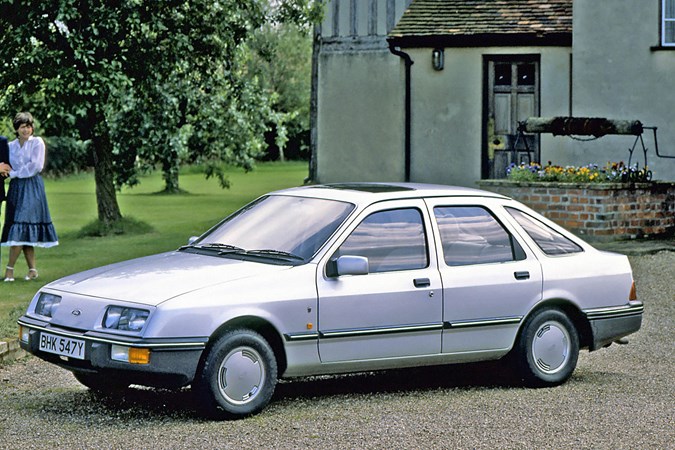
The motoring landscape before 1982 was, for the most part, something you could build in Lego without any fancy curved bits. The poster child for this era was the clean, squared-off Ford Cortina which had lost coke-bottle curves for stark simplicity. In Ford’s styling studios, a revolution was in waiting – and the Probe concept tested the waters, before the ‘jellymould’ Sierra took the role of the beloved repmobile.
Once the shock wore off, people loved it despite its rather dated underpinnings. Besides, traditionalists loved a rear-wheel drive performance Ford, and their needs were met by the striking bi-winged XR4i and legendary Cosworth. Fast Ford fans should also seek out the XR4x4.
1983 Peugeot 205
Sophistication comes to small cars
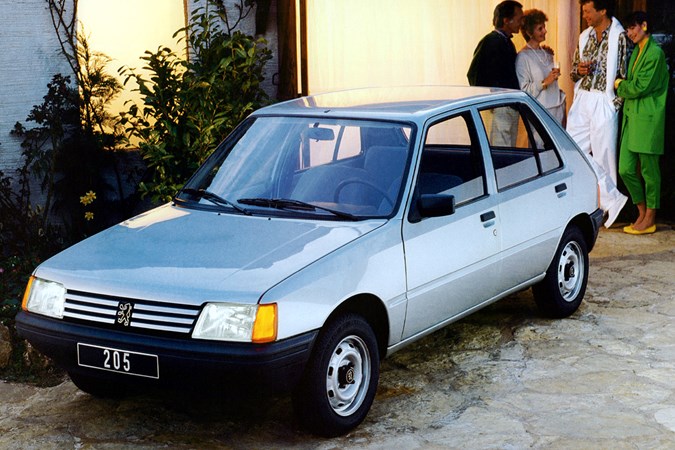
Popularity right up to the end of its 15-year lifespan proves that the Peugeot 205 absolutely nailed the small car formula. There was something in this pretty little car’s range for everyone, whether you wanted luxury in a Roland Garros model, a fuel-sipping diesel, a cute cabriolet, a barebones runaround or arguably the best hot hatchback of all time, the 205 GTI.
From a company better-known for its large and rugged saloons and estates, the 205 was a revelation – no wonder our sister title, CAR magazine, named it its ‘Car of the Decade’ in 1990.
1984 Renault Espace
The first desirable people carrier
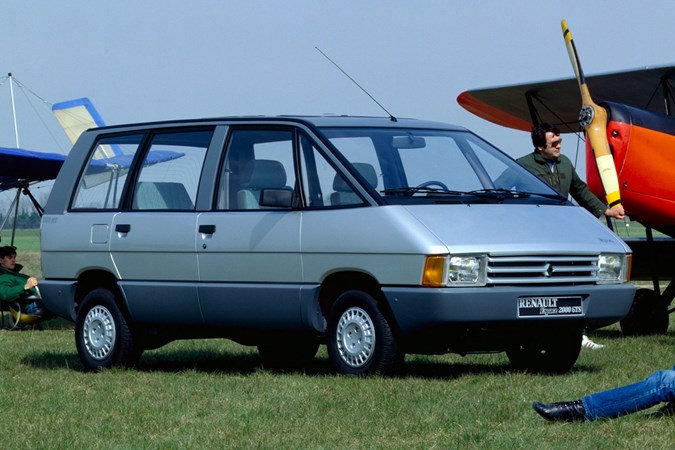
No, the Espace wasn’t the first ever MPV, but it was the first one worth buying. Bringing car-like handling and a comfortable, flexible interior to a fledgling market segment filled with glorified panel vans, the Espace wasn’t exactly an instant hit – but once Europe was bitten by the people-carrier bug, the infection lasted decades.
Though the SUV has undoubtedly replaced the humble MPV in family buyer’s affections to the point where the current-generation Espace isn’t even offered in the UK, we’ll look back fondly on the TGV-styled Mk1 model that lit the touchpaper.
1985 BMW M5 (E28)
Supercar performance, saloon style
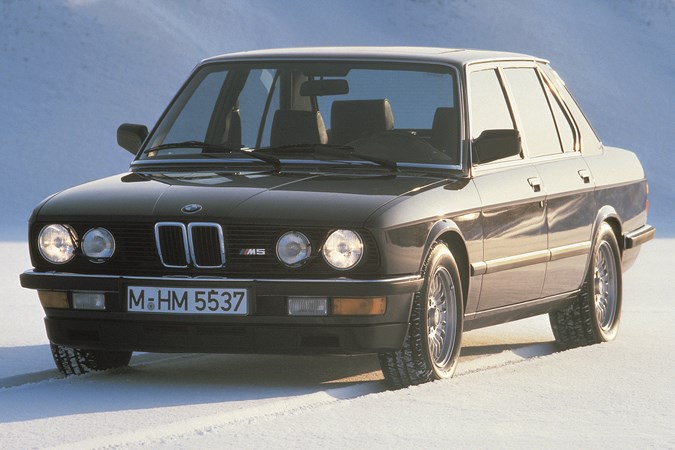
The BMW M5 was a genius creation that really shouldn’t have worked. The ingredients were simple – install the 286hp 24-valve six-cylinder engine from the original M1 supercar into the body of the 5 Series executive saloon, and see the sparks fly. And what an amazing machine it was – offering Porsche 911-rivalling acceleration in a family friendly package. At a price.
The best bit of the original M5 was its butter-wouldn’t-melt styling – unless you looked closely, it looked like any other 525i, which made this 155mph saloon the perfect Q-Car. No surprise that it sparked a series of super-saloons that are still with us today.
1986 Citroen AX
Light, efficient, likeable supermini
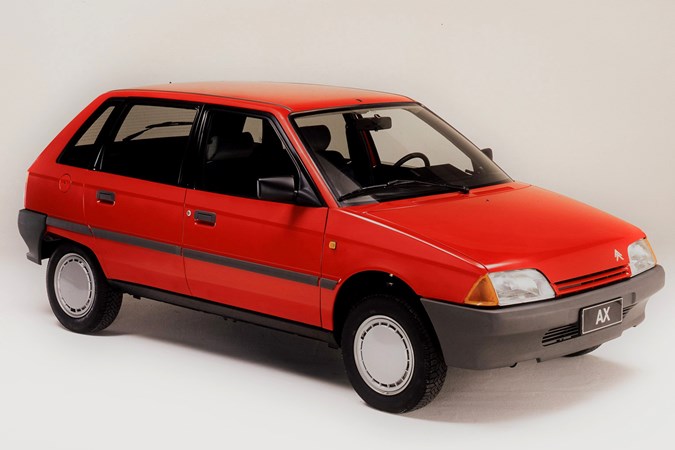
Europe has had a love affair with the supermini for years and years, yet it took Citroen a few attempts to crack it. But boy, did it crack it with the AX. Its efficient packaging and lightweight construction (it even had a composite tailgate) meant it was practical and punched above its weight.
There were many clever details inside, incuding an integrated bottle holder in the door. It also sired the brilliant GT hot hatch – a true modern-day classic Mini Cooper. Plus, its low purchase price and even lower running costs kept people happy. But beyond that, its cute looks meant it was a lovable thing.
1987 Peugeot 405
Raising the bar for style and drive
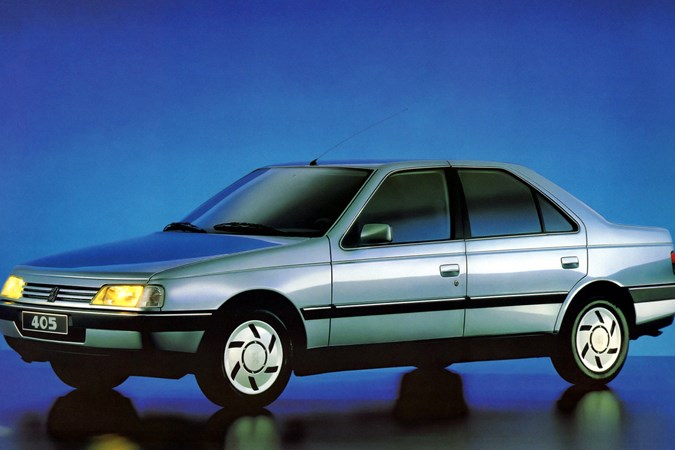
After decades of making dependable family saloons and estates, Peugeot’s transformation into a cool, stylish marque through the ‘80s reached a peak with the 405. Sophisticated suspension and a strong body endowed the popular saloon with class-leading handling, while the potent Mi16 took drivers’ breath away.
It’s the turbodiesel that was really ahead of the game however, providing motorway-eating torque with unprecedented economy and refinement for the class on offer. The 405 lives on in slightly altered forms around the world, continuing a Peugeot tradition.
1988 Vauxhall Cavalier Mk3
Family car honed for long distances
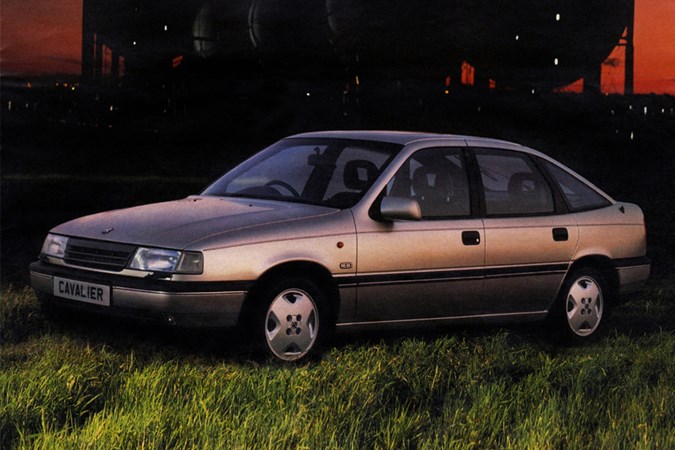
During the mid-1980s, the Vauxhall Cavalier Mk2 was the bestselling large family car – as well as the darling of sales reps across the UK. However, its traditional styling soon became old-hat, especially alongside the Sierra, which got better with each passing year. However, the Cavalier Mk3 put that right in the best way possible, by both looking ultra-modern and being much better built.
What resulted was a brilliant family car, best suited to motorway driving and keeping the driver comfortable for long periods of time. Despite its advanced styling, it was a cinch to maintain and impressively economical. That led to it becoming the de facto company car of its time, and one that its rivals sought to emulate.
1989 Mazda MX-5 (NA)
Groundbreaking affordable roadster
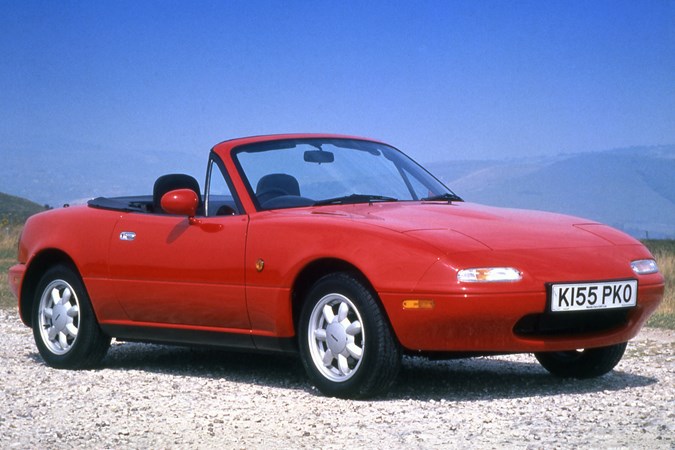
Inexpensive, simple but well-engineered and – above all – incredibly good fun to drive, Mazda’s obsession with creating an authentic, back-to-basics sportscar experience has become a global phenomenon. Taking the best elements of classic British roadsters and combining them with Japanese reliability, the MX-5 manages to balance a heavy hit of nostalgia with genuine everyday useability.
And that point is as true now as it was when the MX-5 was launched. Four generations of MX-5 later, the original is now very much a classic in its own right, but the purity of spirit continues in the latest version as well. What a legacy. Plus, pop-up headlights are brilliant.
1990 Nissan Primera
Brilliant to drive, hugely well built
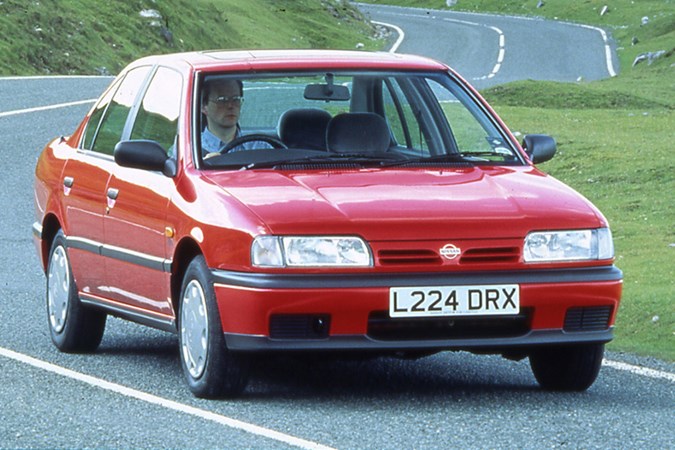
The Nissan Primera is largely forgotten today, so it’s difficult to appreciate just how significant it was for its maker and the Japanese car industry as a whole. It was designed to compete in Europe and, as such, ended up looking like a combination of the Peuegot 405 and Vauxhall Cavalier. However, it was propped up by a class-leading chassis and powered by an excellent range of punchy engines.
As such, it stormed its way to the top of the family car class. All that held it back were high list prices in the UK, which meant that many family car buyers chose to remain with their Cavaliers and Sierras, even though the Nissan outdrove and outlasted them all.
1991 Volvo 850
New tech, same toughness of spirit
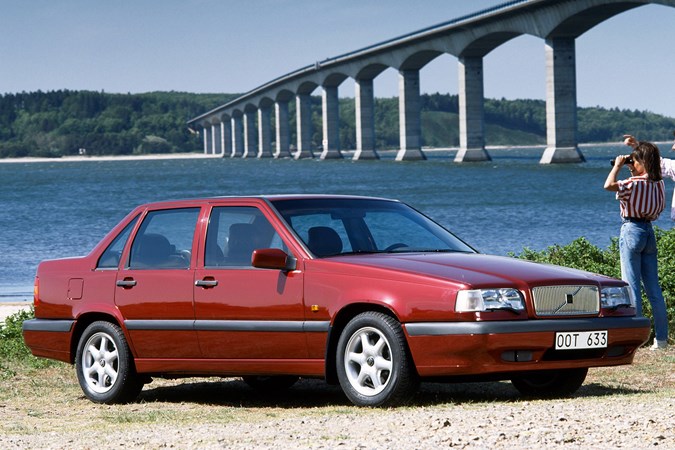
Like Saab, Volvo’s relatively small footprint as a car manufacturer meant excellent designs with a long life, rather than frequent mediocre ones. Those designs became very old, very quickly in the high-tech, fast-paced world of the ‘80s and ‘90s – so a new era of Volvo was created, with safer front-wheel drive handling and advanced technology.
The 480 paved the way, but it’s the 850 that delivered traditional Volvo space, safety and boxiness with a thoroughly modern approach. Sonorous five-cylinder engines and Scandi-cool solid interiors won the mind – and the spectacle of the BTCC Volvo 850 won the heart. Max Power boy racers soon began to dread the police’s army of rapid wagons, too…
1992 Ford Mondeo
Massive leap forward for sales reps
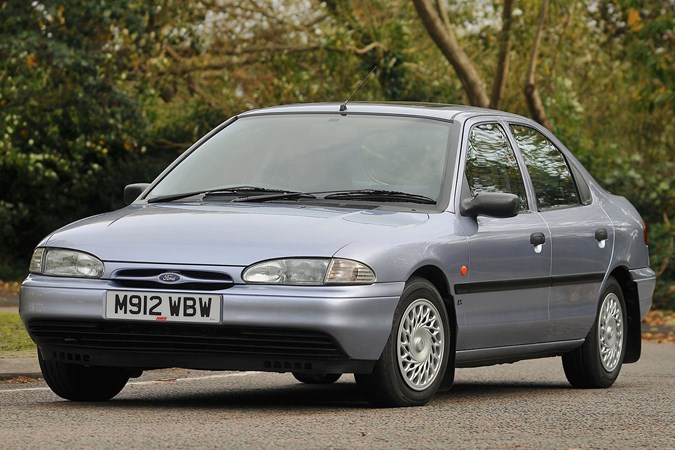
The Mondeo was a make-or-break car for Ford – pure and simple. With a development budget that topped £3billion, it should have been good. And so it proved. As a replacement for the Sierra, some fans bemoaned the Mondeo for making the switch to front-wheel drive, but in reality that gifted us a better-packaged, roomier car, that was also a damned sight better to drive than the car it replaced.
Offered as a saloon, hatchback or estate, there was a Mondeo for everyone – and despite its conservative styling, it soon became a staple product among middle-class professional drivers. So much so that New Labour identified ‘Mondeo man’ as a sector of the population it needed to talk to…
1993 Peugeot 306
Top-drawer dynamics from France
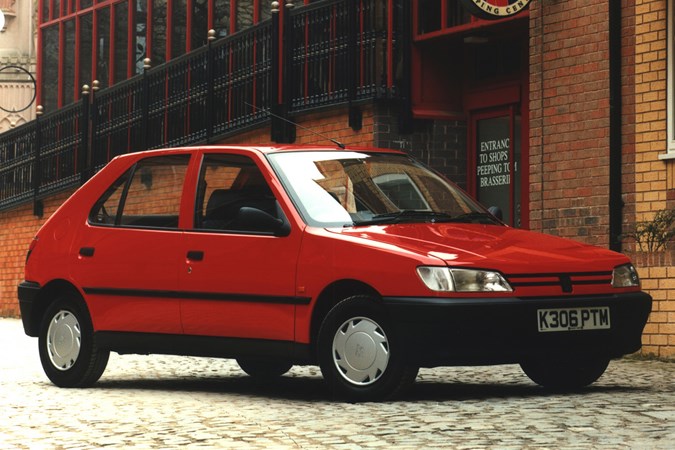
Another Peugeot hatchback that didn’t exactly break any new ground, but simply offered a great all-round package that was superb to drive. The 306 was attractive and practical (especially the Pininfarina-designed Cabriolet) and set new standards for how a hatchback should handle – lightweight, with quick steering and tons of feedback.
A near-perfect driving position helped too. Available as a spectacularly good GTI-6 model as well as the D Turbo – arguably the first diesel hot hatchback, the 306 still holds up today as a really fun little almost-classic.
1994 Audi A4
New-era Audi raised the quality bar
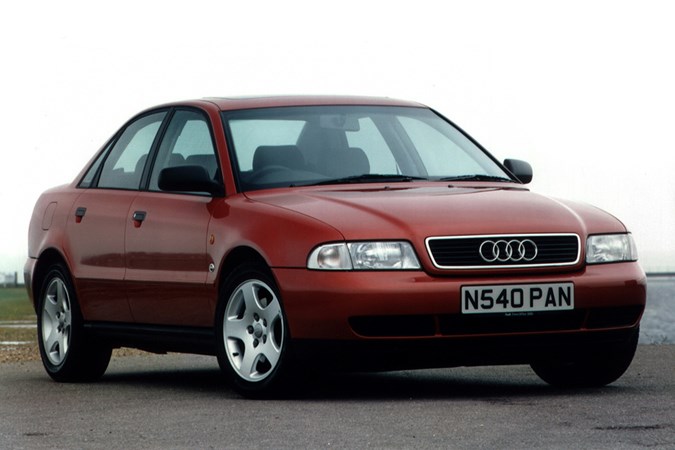
As a replacement for the long-lived and innovative Audi 80, the A4 didn’t look like much of a step forward at launch. But, it was the first all new A-series Audi, introducing a naming convention that still lives with us today. The A4’s deep-seated quality would endear it to owners, especially as the miles racked up – and the styling oozed discreet desirability, while the solid interior was a precision-moulded masterpiece.
Front- and four-wheel drive and a selection of four- and six-cylinder engines meant that it was pitched it right at the heart of the BMW 3 Series market, but with a much different set of qualities. This generation saw the Quattro become mainstream and usher in the arrival of the S4 high performance franchise.
1995 Peugeot 406
A styling and dynamic masterclass
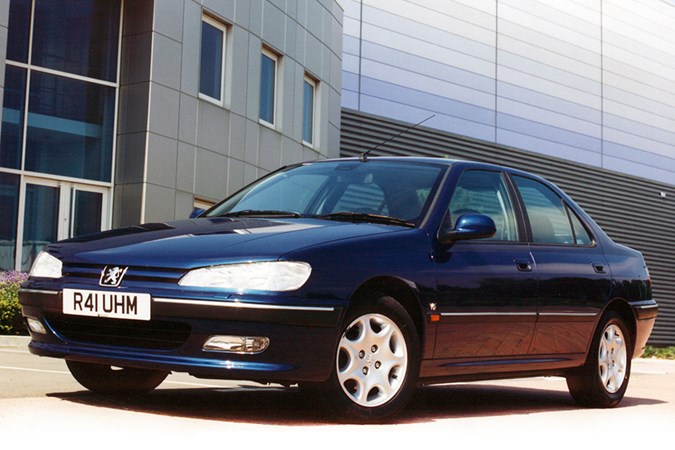
As brilliant as the 405 was to drive and look at, it was hardly a high-quality product. What Peugeot managed to do with the 406 was build something with all the appeal of the model it replaced, but with a dose of build quality and longevity not seen in a Peugeot saloon since the 505 shuffled off this mortal coil.
The 406 proved a popular choice with company car drivers, thanks to the availability of a punchy and economical turbodiesel model that was every bit as good at the petrol models in the range. Aside from the V6, of course… Finally, the 406 sired a gorgeous Coupe version that still looks every inch the baby Ferrari.
1996 Lotus Elise
A reinvention of the sports car
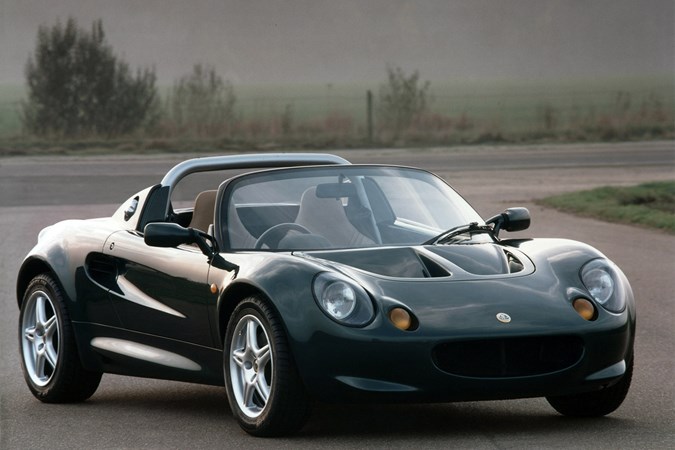
The Elise marked a welcome return to its roots for Lous. After a series of increasingly expensive, more supercar-like Esprits, the mid-engined Elise was a well-priced, attainable, lightweight sports car cast in the mould of legends such as the original Seven or Elan.
Underpinned by clever a bonded composite monocoque, and powered by a revvy, off-the-shelf Rover K-Series engine, you got all of the power-to-weight ratio you’d ever need and delightful handling and ride. It wasn’t for everyone, being basic and cramped inside, but what classic Lotus ever was?
1997 Mercedes-Benz A-Class
Small Merc too clever by half
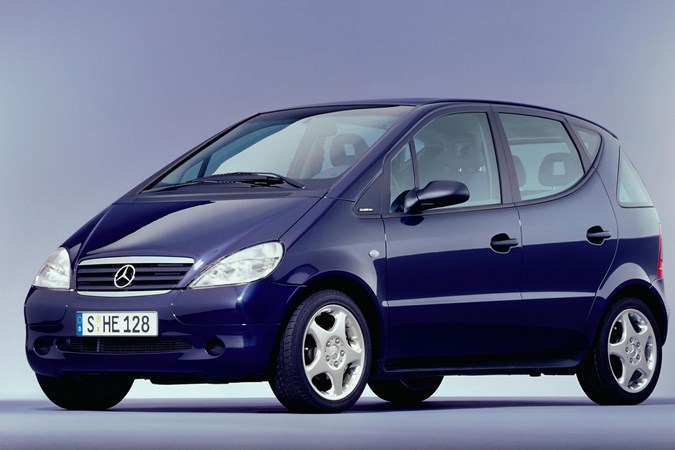
The A-Class will go down in history for beginning a motoring revolution – though not in the manner Mercedes had originally intended. The boffins at Benz were expecting the unusual sandwich concept chassis to be the major point of difference between this and other small cars: the hollow floor useful for interior space and crash safety, allowing the engine to be directed underneath passengers rather than into them.
But ironically, a spectacular failure in the Swedish ‘elk’ test instead saw the A-Class become a catalyst for the standardisation of electronic stability control, which has done way more for vehicle safety than the sandwich floor ever could.
1998 Ford Focus
A welcome return to form

Putting the old Escort out to pasture after 30 years must have been hard for Ford, but it was high time the old dog was sent to the great kennel in the sky. What nobody could have predicted was the brilliance of its replacement. The Focus defiantly ticked absolutely every box, being equal parts good-looking, efficient, practical and wonderful to drive.
It proved you didn’t need to spend mega-money to enjoy a car without compromise, and whether you opted for a humble 1.4 or the eager-handling ST170, the Focus could put a smile on your face.
1999 Audi A2
Top engineering in miniature
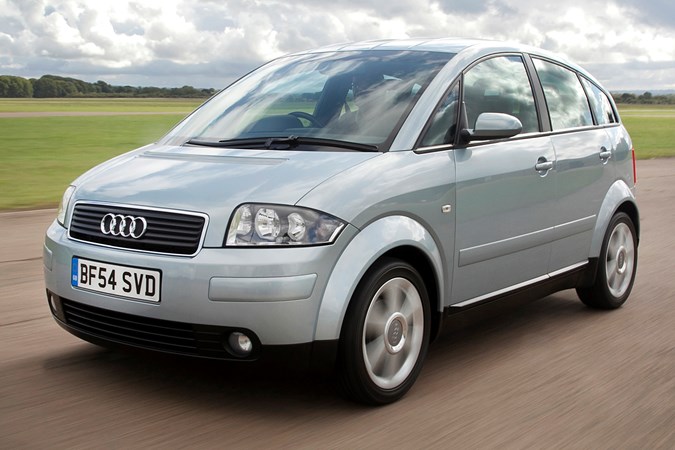
Sometimes the most interesting cars are the least successful. The Audi A2’s sales figures pale in comparison to its Mercedes-Benz A-Class rival – yet it’s a miniature marvel, with a focus on economy and forward-thinking. With an aluminium spaceframe instead of a traditional monocoque, the A2 is highly aerodynamic, super-lightweight, and even the thirstiest engines were impressively efficient.
That mini-MPV silhouette even endowed it with impressive passenger space. But it’s the styling that really makes the A2 stand out – even today, it looks modern and attractive, with a minimalist aesthetic that just oozes cool.
2000 Vauxhall VX220
Delightful diversion for Vauxhall
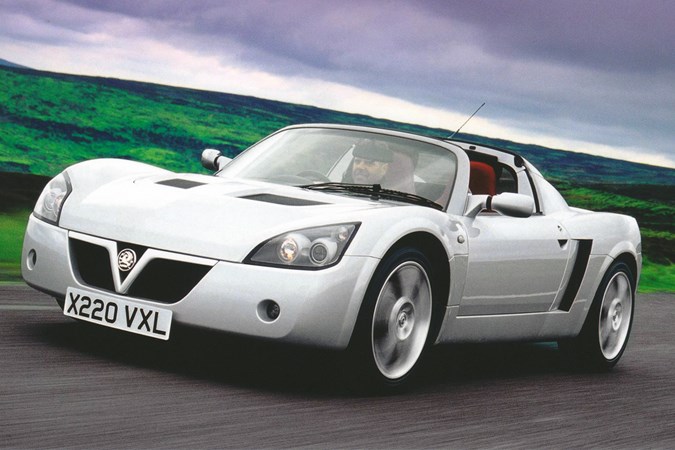
Vauxhall’s heritage as a performance pioneer demonstrated a willingness to adapt and evolve, but for the most part reflected tuned-up versions of existing saloons and hatchbacks. When Lotus (also owned by General Motors at the time) needed to invest in development of the groundbreaking Elise, an opportunity for a bespoke Vauxhall roadster came up – and the result is the best of both worlds.
Replacing the Elise’s Rover K-Series engine, Vauxhall’s big 2.2-litre engine – and 2.0-litre turbo in 2003 – gave the VX220 supercar-baiting performance on top of the sublime Lotus handling. As well as being more spacious and practical than the Elise, it was also faster, reaching 62mph in 4.7 seconds.
2001 MINI
Brilliant modern retro reboot

How to reinvent an icon? Rover and BMW grappled with this dilemma throughout the 1990s before concocting the brilliant new-generation MINI, launched in 2001. Sadly, BMW and Rover had already parted company by the time it went on sale, so it would be the German company that would reap the financial rewards of this brilliant car – but whatever the parentage, the MINI was an absolute delight.
This retro-modern reinvention of the Mini was blessed with beautifully communicative steering and handling, and nippy performance in Cooper (and later Cooper S) form. Yes, it was cramped in the rear, but this lack of practicality mattered not one jot. Buyers wanted personalisation, fun and a premium experience, all of which the MINI delivered.
2002 Volvo XC90
Cool new SUV style for Volvo
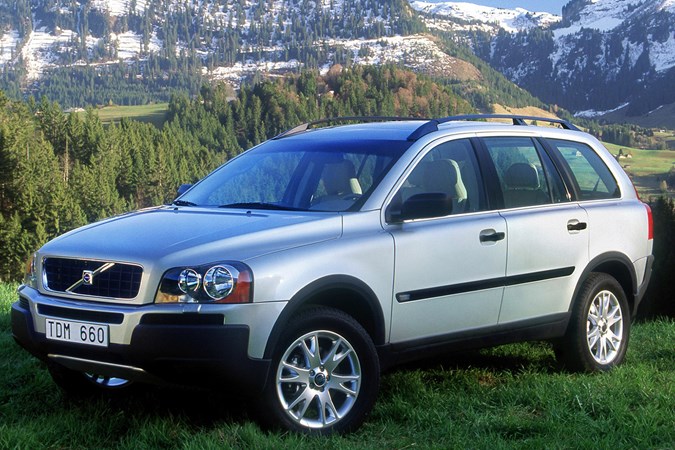
So ingrained in the Volvo way of thinking are full-fat SUVs that it’s hard to believe that the Swedish company never had a serious crack at one until the arrival of the original XC90 in 2002. Yet, despite being an all-new departure for Volvo, the XC90 hit the bullseye so effectively that this BMW X5 rival felt utterly ‘right’ from the get-go.
Its interior was beautifully styled and trimmed, making this every inch a luxury car, but with a chunky look that meant drivers didn’t feel shy about taking it off-road properly. A wide range of engines and trims made it a viable option for many buyers – many of whom are still rolling along in them to this day.
2003 Toyota Prius
Democratising the Hybrid car
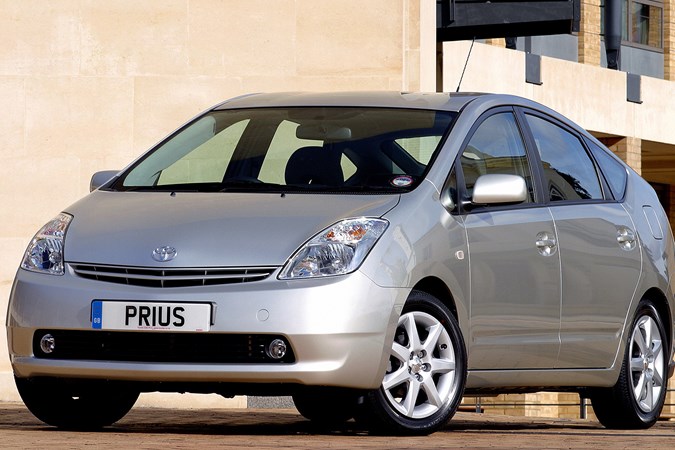
Before the arrival of the second-generation Toyota Prius, hybrid cars were niche products bought by green-minded ‘tree huggers’ (the kind of people we all aspire to be now). The original Prius and the Honda Insight pioneered battery-electric hybrids, but the idea of an electrically-assisted petrol car only really gained momentum in 2003 and this Prius.
This family car, capable of diesel-like fuel economy and clean, silent running in the city, caught the imagination of drivers across the globe. In Japan it was a bestseller, in the USA it was embraced by the Hollywood glitterati, while in the UK, a generation of minicab drivers took the Prius to their collective hearts – and more importantly, most are still going strong today.
2004 Porsche 911 (997)
Probably the best 911 of all…
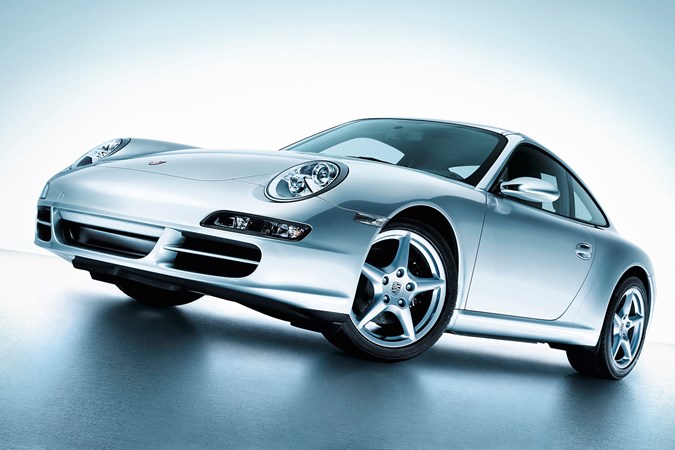
We feel that history may well look back on the 997-generation of Porsche’s flagship sportscar as peak water-cooled 911. With more agreeable looks and higher interior quality than the preceding 996 (which was the first to transition away from the air-cooled engines of earlier models) but a more compact footprint than the somewhat big-bottomed modern-era examples.
The 997 is a truly all-round usable high-performance machine, as at home in the city or narrow country lanes as it is on the autobahn or racing circuit. The range of variants also means there’s a 997 to suit almost everyone, from grand tourers to hardcore track day enthusiasts.
2005 Toyota Aygo
Fun, stylish and funky city car
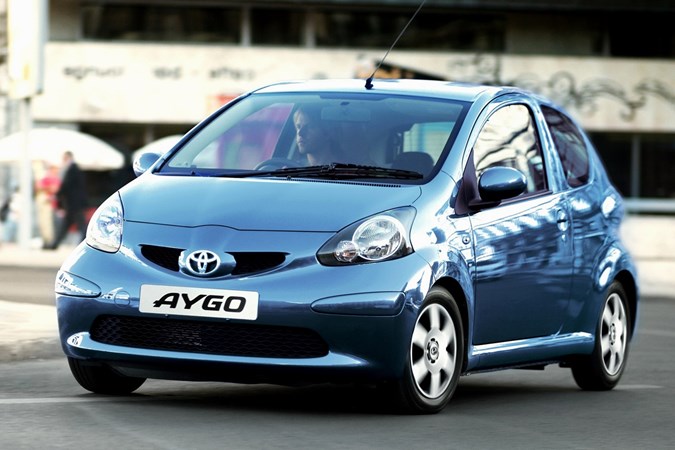
During the 2000s, carmakers were building more complex, large and expensive models to appeal to increasingly affluent buyers. So, the arrival of the Toyota Aygo (and its Citroen C1 and Peugeot 107 cousins) was genuinely great news for buyers looking for cheap and cheerful transport.
The Aygo was great fun to drive, thanks to its revvy little three-cylinder engine and tidy handling, but still cheap to run and fuel. Being a Toyota, it was backed by a great warranty, excellent dealers and the promise of brilliant reliability – thus proving that buyers of entry-level cars need not be treated like second-class citizens.
2006 Audi R8
The most usable supercar ever
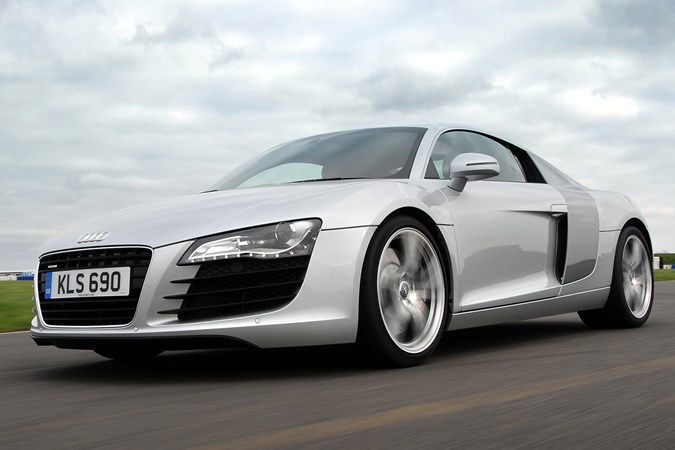
Audi re-wrote the supercar rulebook when it unleashed the R8. Here was a (relatively) inexpensive mid-engined sportscar with a powerful and charismatic V8 engine, paired with drop-dead looks that borrowed from no rival, and a driving experience that was at once visceral, thrilling and biddable.
It took traditional Audi strengths, including Quattro four-wheel drive and everyday useability and combined them with gloriously affected details, such as the gated manual transmission and the distinctive ‘side blade’ exterior styling elements, and a chassis structure shared with Lamborghini. An utter triumph, even before the V10 version arrived and boosted performance even further.
2007 Fiat 500
Icon rebooted in the retro style
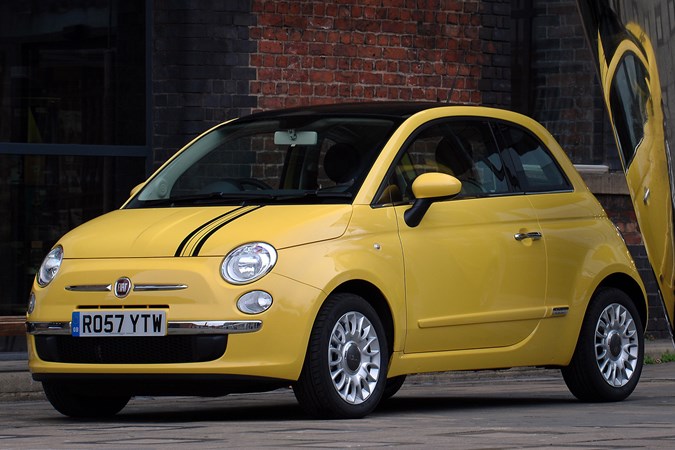
Remember when retro-styled cars were all the rage? Well, the resurrected Fiat 500 has thoroughly transcended that phase, and the staggering bullseye success of this evocative design is underlined by the fact that it is still available in almost unaltered guise today.
But the cleverness here was more than skin deep. For such a small, style-orientated car, the packaging is remarkably good – compare the legroom in the back to the contemporary MINI – while the use of proven components meant good reliability from the off. The first examples weren’t that great to drive but even this has improved over time. A compact legend in its own lifetime.
2008 Ford Fiesta
Fun, sharp looks, and Ford value
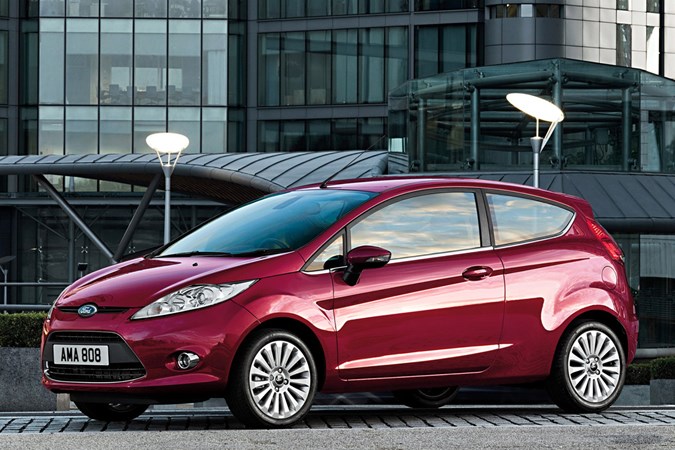
Cast an eye over a 2008 Ford Fiesta, and you’d never think it’s 14 years old, so timeless does it look. But such was its influence that a raft of rivals copied its styling, while Ford concocted a same-again design for its replacement almost a decade later. No wonder that used examples still fetch good money.
Available with a wide range of petrol and diesel engines, as well as a 200hp ST model, the Fiesta appealed to a broad spectrum of buyers. All were great fun to drive, too. Even better was that it was inexpensive to buy, cheap to run and easy to service by Ford’s massive dealer network. No wonder it was a bestseller throughout its life.
2009 Skoda Yeti
Cool and usable SUV for families
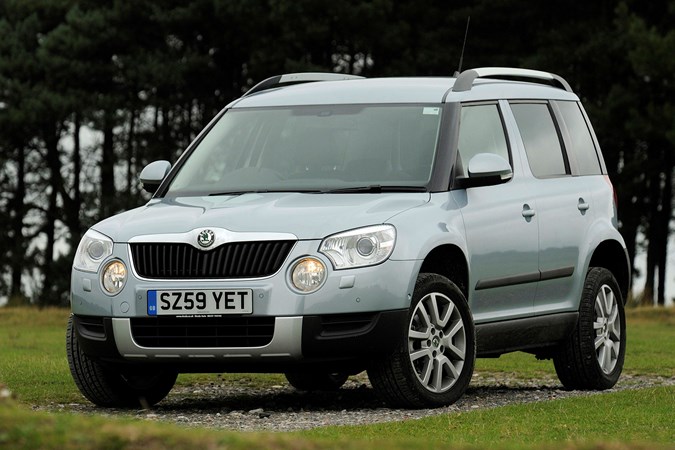
Back in 2009, the Skoda Yeti was an interesting and unusual product – a family-sized SUV based on Volkswagen Group running gear, and wearing its Skoda badge with pride. It was a brave step for this most conservative of carmakers, but one that ended-up proving remarkably prescient.
Available with two- and four-wheel drive, petrol or diesel engines, and a usefully raised ride height, you could be sure there’d be a Yeti that’s perfect for you. Practicality and sheer family-friendly appeal aside, what really set the Yeti apart was its chunky, loveable styling. As good as the current range of Skoda SUVs are, it’s a shame they don’t have the honest classless appeal of the Yeti.
2010 Nissan Leaf
Affordable, usable electric car
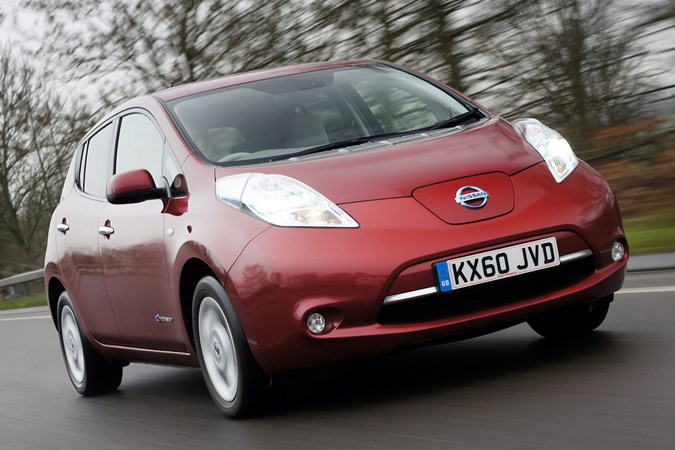
The Nissan Leaf was the first electric European Car of The Year and as such, is something of an automotive landmark. If you could get past its idiosyncratic styling and weird interior, the Leaf was a surprisingly usable electric family car that won lots of plaudits from early adopters who could see the writing on the wall for petrol- and diesel-powered cars.
Today, the 100-mile range from an early Leaf is far from impressive, but the performance and practicality still hold up, proving that Nissan was on the money with the Leaf. So much so that jumping in one now doesn’t feel like a step back in time.
2011 Range Rover Evoque
Premium style for smaller SUV
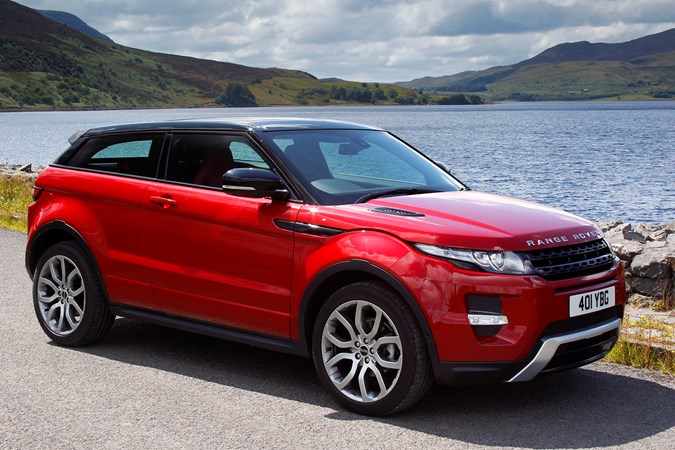
If you were a cynic, you’d dismiss the Evoque as a gussied-up Land Rover Freelander sold at a whacking great premium. However, for the model’s legions of fans (who include us), that’s missing the point, because the original Evoque was quite simply a brilliant addition to the new car market – and one that arguably popularised the premium SUV.
The Evoque managed to combine the elegance and luxury of a full-fat Range Rover with an agreeably compact footprint that made it so usable in the city. It was – and is – good to drive. How good? It’s surprisingly agile on back roads, but still capable of off-roading as well as many more overt 4x4s.
2012 Volkswagen Golf Mk7
The most complete family hatch
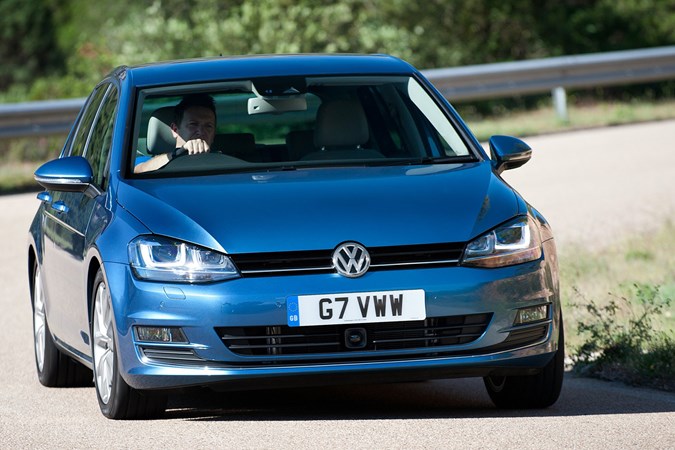
The Mk8 Volkswagen Golf’s been on sale for a few years now but we still miss its predecessor. This was perhaps the ultimate expression of a family hatch – not flashy, not exciting, just absolutely competent and supremely easy to live with.
The cabin is an exercise in quality and restraint, with a sense that nothing extraneous was allowed to make it through the design process – everything the new model, with its touchscreen-controlled dashboard, isn’t. And on top of all that, it’s still practical and cheap to run. The Mk7 Golf will be looked back on as one of the greats.
2013 BMW i3
BMW’s first i-Car still looks cool

Cross-branding between computer companies and cars isn’t, as yet, a thing – but if it were, iPod-era Apple and i-era BMW would have been a natural match. In creating its first mass-production, small electric car BMW really did think differently – the body was shaped in carbonfibre with pillarless doors and an unusual, tall, airy shape that makes ‘straight out of scifi’ Teslas look dull.
It’s hard to believe the car is approaching 10 years old. The high-tech approach squeezed more range out of the small battery, but bets were hedged with a motorcycle-engine generator on REx models. It’s still one of the most rational electric car designs you can buy.
2014 Tesla Model S
The most important EV so far…
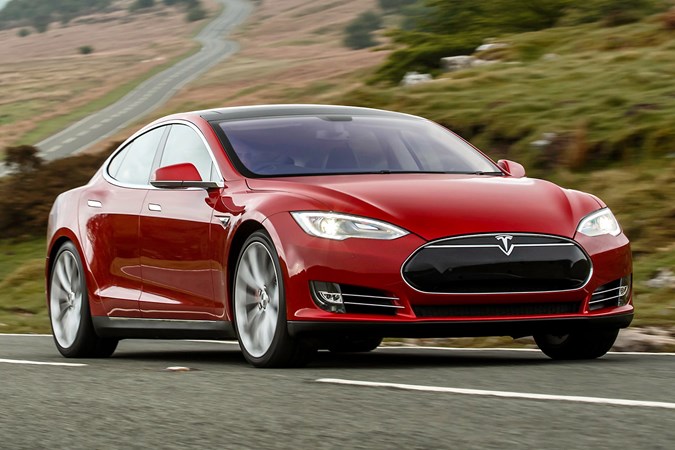
Until the arrival of the Tesla Model S, it was unusual to consider an electric car on a level playing field with its petrol and diesel rivals. But here was a huge leap forward for EVs, because where Tesla proved itself to be extremely clever was in its desire to build an infrastructure to support its new product – in the shape of the brilliant Supercharger network.
However, the Model S remains a desirable car in its own right to this day. It features dramatic styling and a super-practical interior, as well as a central screen operating system that’s still ahead of most of its rivals. Amazing performance in the top models and a long and usable range are the icing on the cake.
2015 Mazda MX-5 (ND)
Cheap to buy, more fun than ever
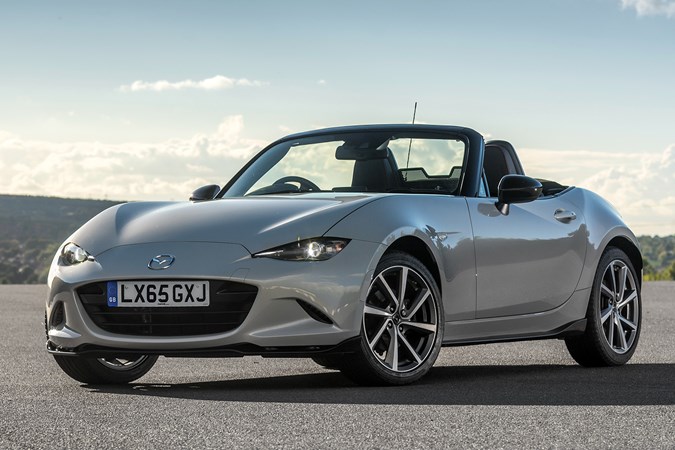
After years of gaining weight, there were fears that the fourth-generatiopn Mazda MX-5 was going to continue that trent for additonal heft. However, we were in for a surprise, though, as the 2015 MX-5 ended up being around 100kg lighter than the car it replaced – and that meant it ended up being much nimbler through the corners and quicker in a straight line.
The smaller 1.5-litre four-cylinder petrol engine is also a joy to wring out, especially when paired with Mazda’s razor-sharp six-speed manual gearbox. Shame the interior was so tightly packaged for taller drivers – but at least there was 100 miles of headroom with the top down – and what’s not to like about that?
2016 Skoda Kodiaq
Seven seats widen Skoda appeal
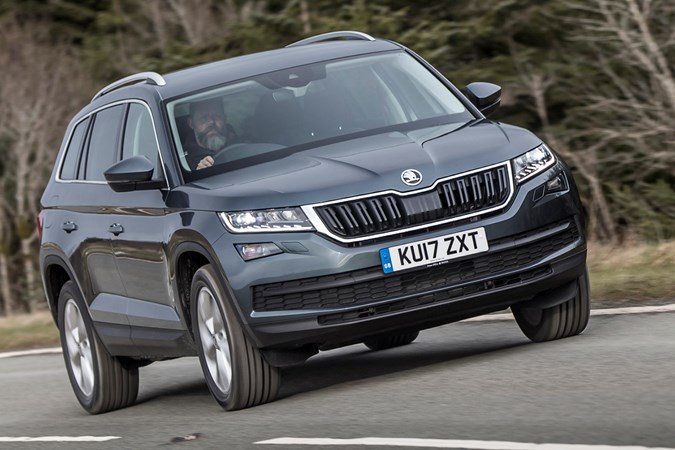
Converter of Skodaphobes wherever it finds them. The Kodiaq has all the spacious, problem-solver appeal of the Czech maker’s estates, but wrapped up in a handsome, fashionable, SUV bodystyle. Boosting practicality further is an optional third row of seats large enough for adults, and all-wheel drive for fearless winter school runs or tackling muddy campsites.
An adventurous looking Scout trim lured Land Rover customers while a spicy vRS model adds kerb appeal and accessible performance. It’s a tall Octavia Estate – and we can think of no finer compliment.
2017 BMW 5 Series (G30)
Desirable, awesome all-rounder
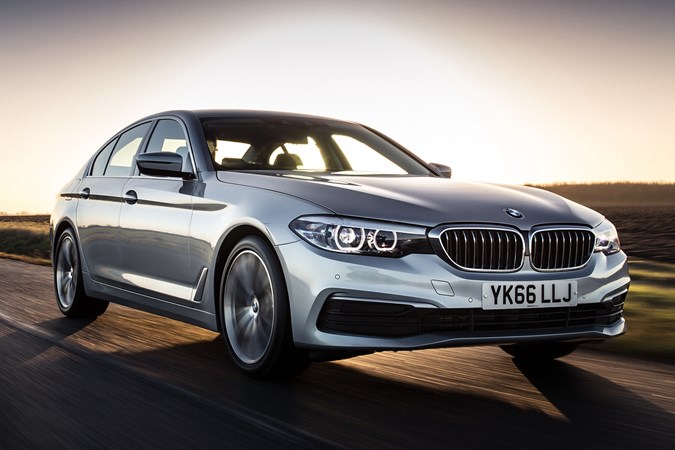
It’s no surprise that this is the second BMW 5 Series on this list. The large saloon has been a consistent front runner across the decades, which these days is a whole lot more affordable than the original E12-generation model launched way back in 1972. For its latest incarnation, the 5 Series is packed with tech to bring awesome refinement, economy and comfort, as well as the performance and driving appeal you’d expect from BMW.
As well as petrol and diesel models, a star of the range is the plug-in hybrid 530e, which is a brilliant all-rounder. Why? Because it’s cheap to tax, capable of brilliant fuel consumption and offers excellent performance when you’re in the mood.
2018 Toyota C-HR
Hybrid family SUV, but sexier
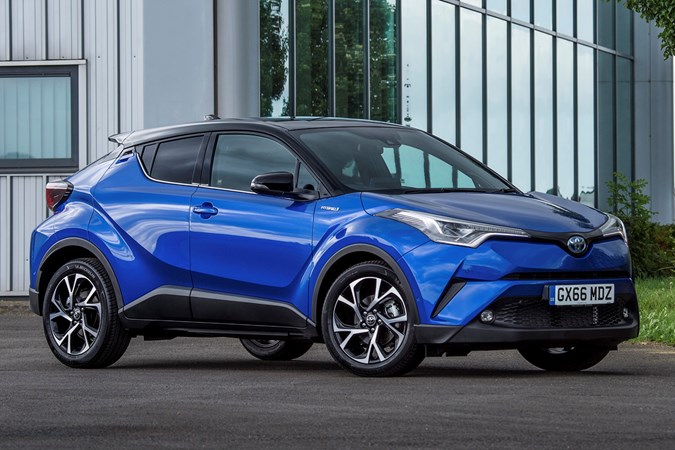
It’s easy to wonder what we were thinking when we made this our inaugural Car of The Year. But let’s put the C-HR in the context of Toyota at the time. This little crossover wasn’t just a cursory entrant into the fashionable and growing small SUV segment, it felt thoroughly and wholistically designed and engineering.
The looks were challenging and attractive rather than staid, it brought hybrid technology further into the mainstream and – unlike most other Toyotas (and rivals) at the time – it offered an entertaining and very well sorted driving experience, developed in Europe. An instant sales success and a paradigm-shifting moment for the company.
2019 Ford Fiesta ST
Top value, brilliant hot hatch
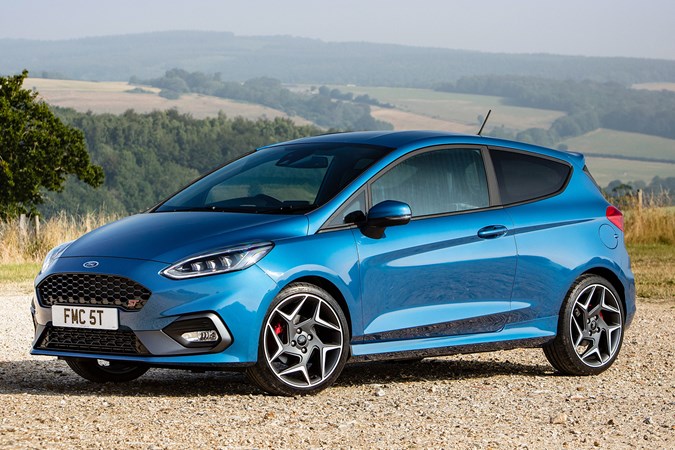
At first glance, the Ford Fiesta ST might seem like an unusual choice for our Car of The Year, but this really is something quite special. Like the previous-generation Fiesta ST, this one really is fizzing with driver appeal and desirability. Being a hot Fiesta means the ST is a practical small family car with decent interior room and boot space, but on B-roads, you’ll end up wearing a massive grin.
That much is to be expected, but the Fiesta ST’s victory was swung by some terrific finance deals on the table that could see one outside of your door for a similar monthly outlay to some really rather humdrum machinery. In short, the ST’s a proper winner.
2020 Tesla Model 3
Tesla EV tech for more car buyers
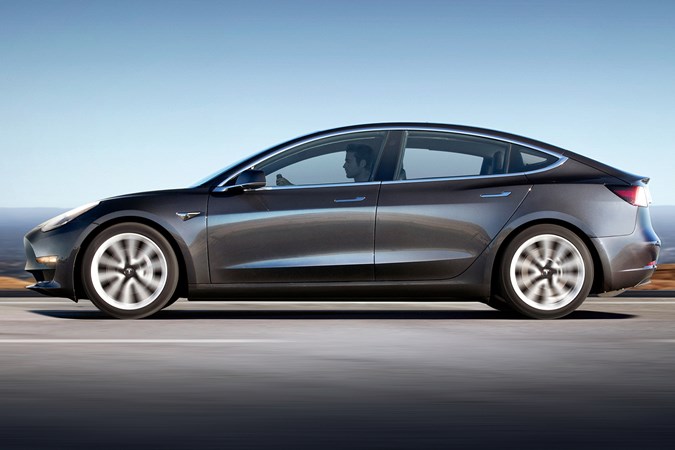
The Model 3 was a long time coming. First shown in 2016, we ended up waiting three years before we could get our hands on one. But boy, was it worth the wait. It’s every bit the shrunken Model S, offering a similar level of technology in a much more accessible package. You could lease one for the price of a 3 Series, and for that, you bought into an ecosystem that allowed you to take long journeys without the stresses usually associated with public chargers.
On the road, a Model 3 can delight and frustrate in equal measure, while the build quality lags behind its executive car rivals. However, it’s still hugely appealing from an overall ownership perspective, despite some maddening reliability issues. Perhaps that’s why it’s consistently the bestselling electric car in the UK.
2021 Ford Puma
Fun-to-drive, easy to live with
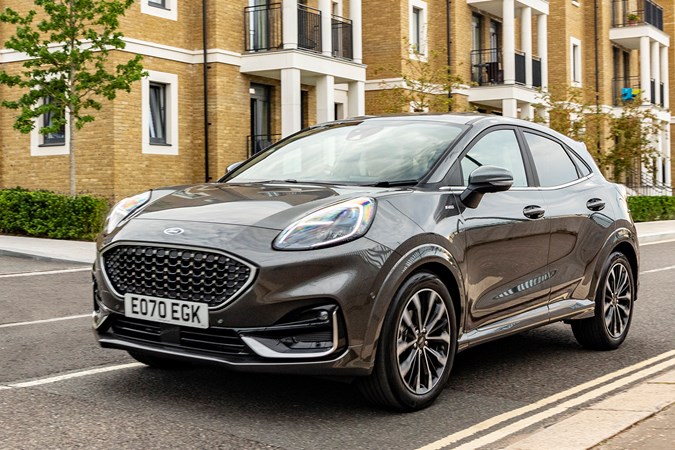
Let’s face it – most of the small SUV craze is a bit, well… dull. Even Ford’s earliest attempts at joining the tall-hatchback trend were more about being bigger and squarer. And then came the decision to resurrect a name from the 1990s. It’s not a cute coupe, but the new Puma embodies the spirit of the small, fun, family-friendly car in a thoroughly modern way.
It’s clever, with efficient use of space and just enough tech to be easy to live with. It looks good, too – the upper half effectively evoking the sleek coupe it owes its name to. Ford could easily create a generic small SUV, but instead it made one with a great character, and that’s rare these days.
2022 Skoda Enyaq iV
Making EVs more accessible for all
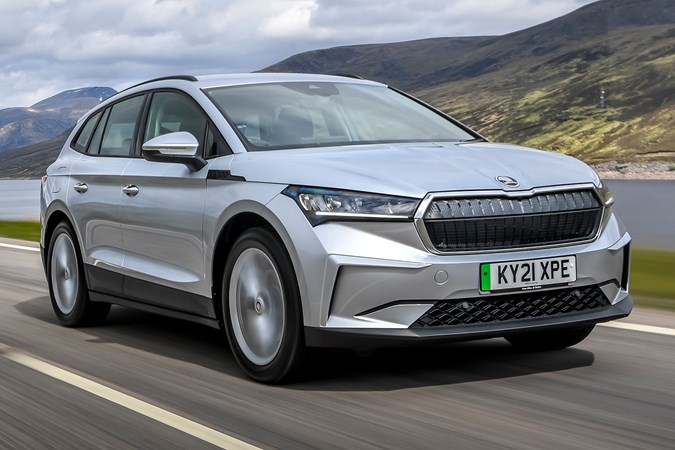
And that leaves us with the current Parkers Car of The Year. It’s another electric car in a list that already has a few – which shows just how quickly battery cars are becoming mainstream. However, what makes the Enyaq iV special is that it works supremely well as a family car without many of the compromises you might have to account for when chosing an electric car.
So, it’s roomy and comfortable, offering excellent boot space and overall practicality. It’s pleasant to drive, offers more than 300 miles of range in some versions, and has a huge model range that encompasses rationality to performance and luxury. When one considers that Skoda’s main model on sale in 1972 was the cheap and nasty rear-engined 1000MB, it’s incredible to see just how far Skoda has come in the past five decades.
A bit like Parkers…
Further reading
>> Back to the Parkers 50 homepage
>> Vote for your favourite Top 50 car
>> How much has driving changed in 50 years?
>> Get a car valuation with Parkers
>> Search cars for sale on Parkers
Just so you know, we may receive a commission or other compensation from the links on this website - read why you should trust us.























































